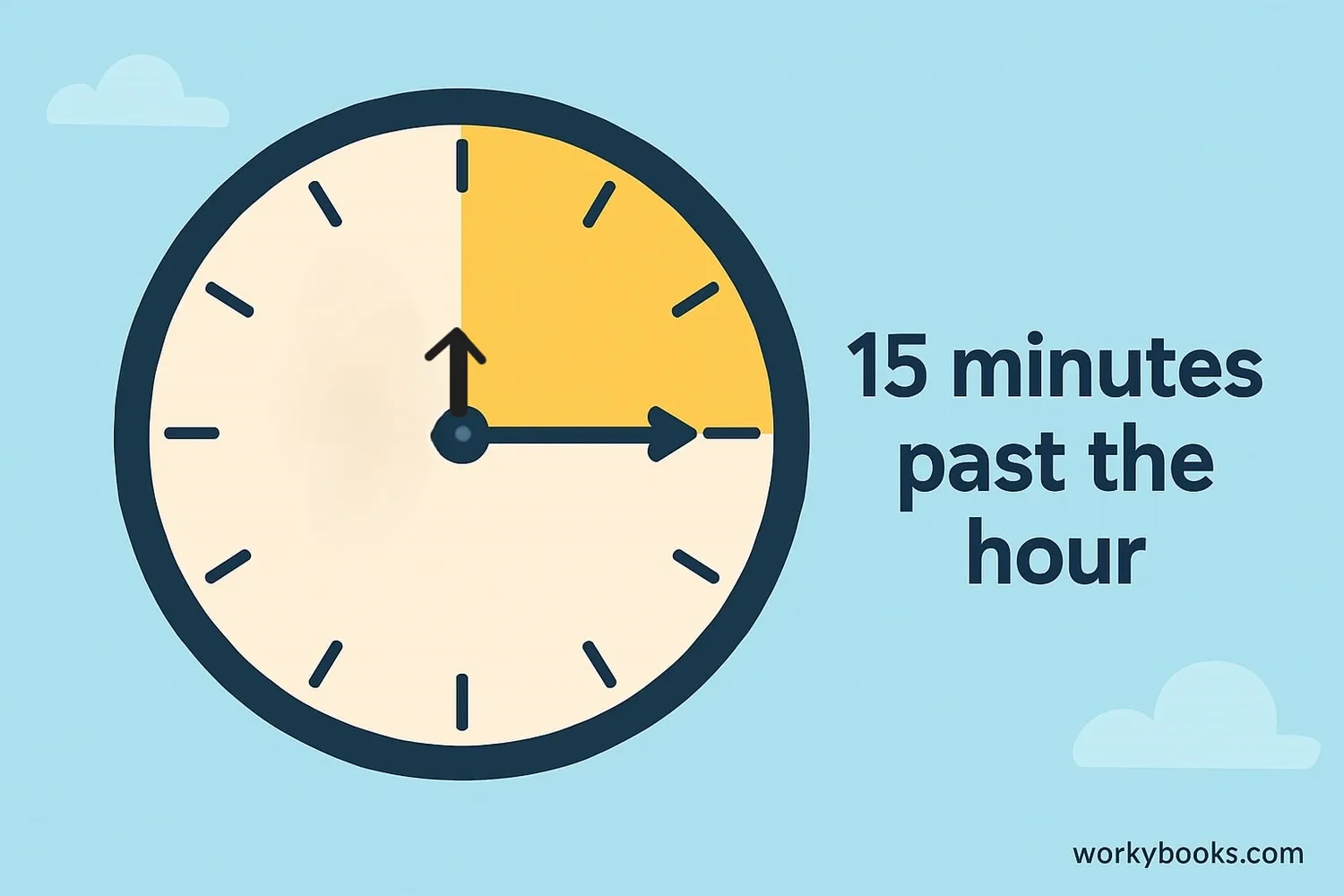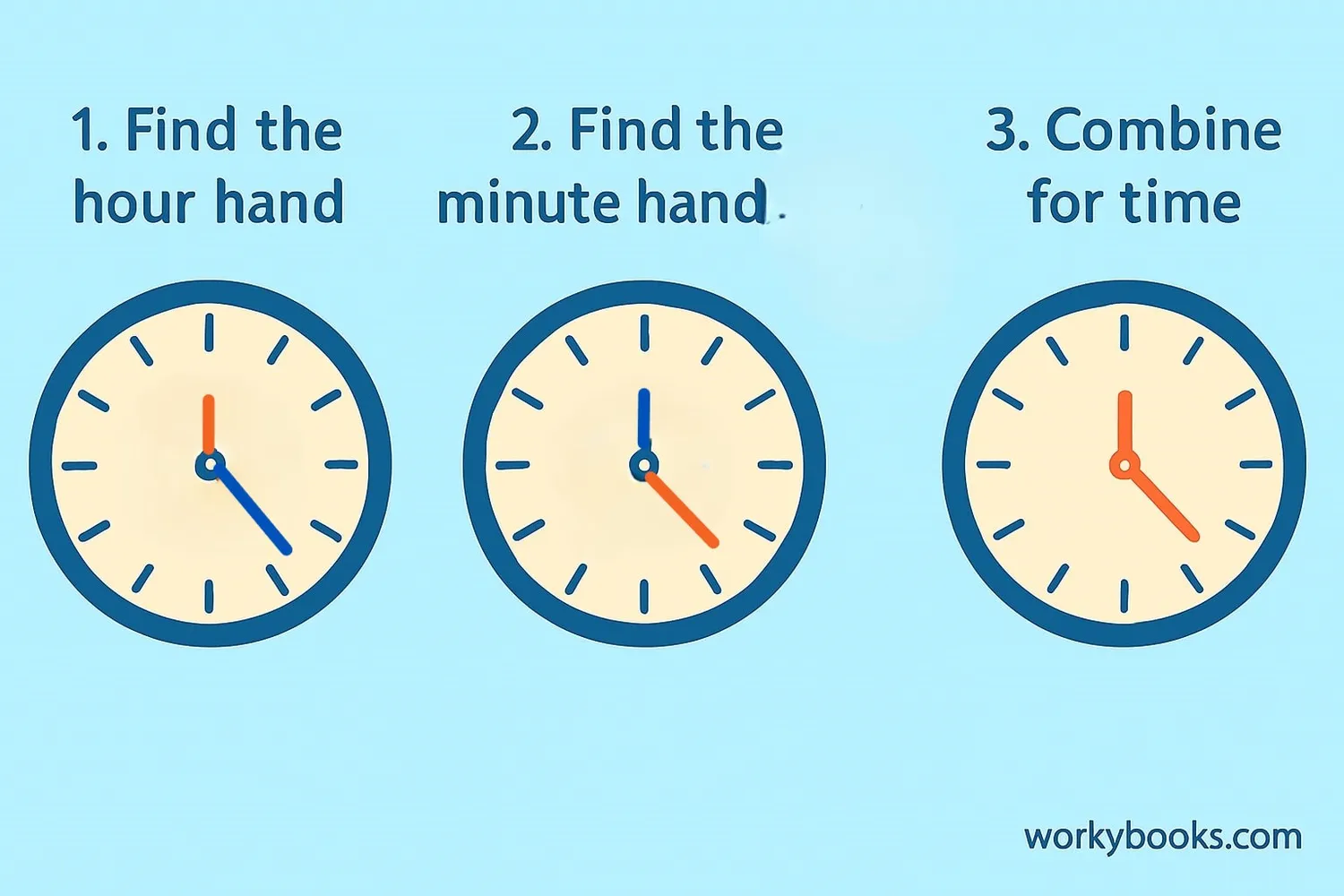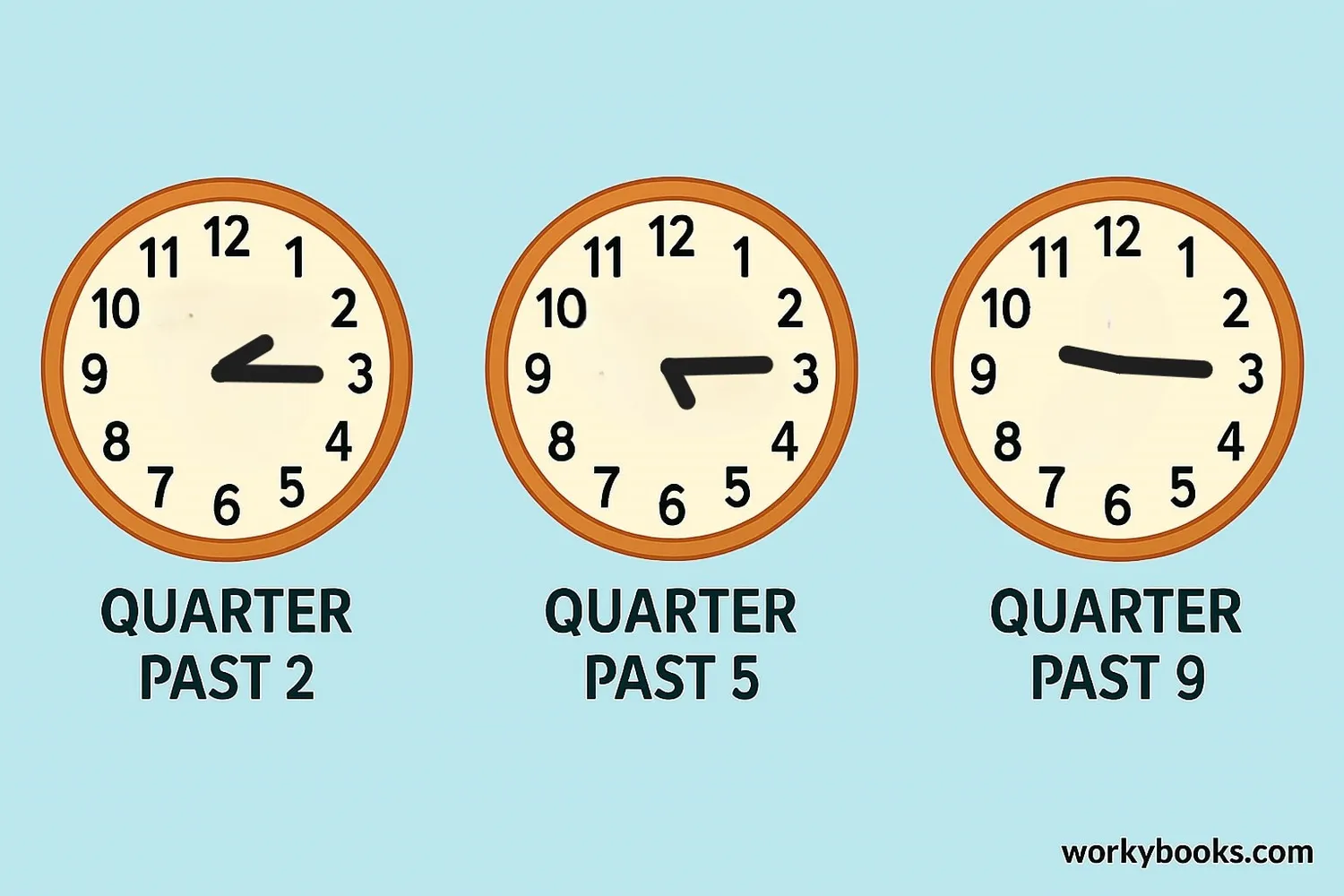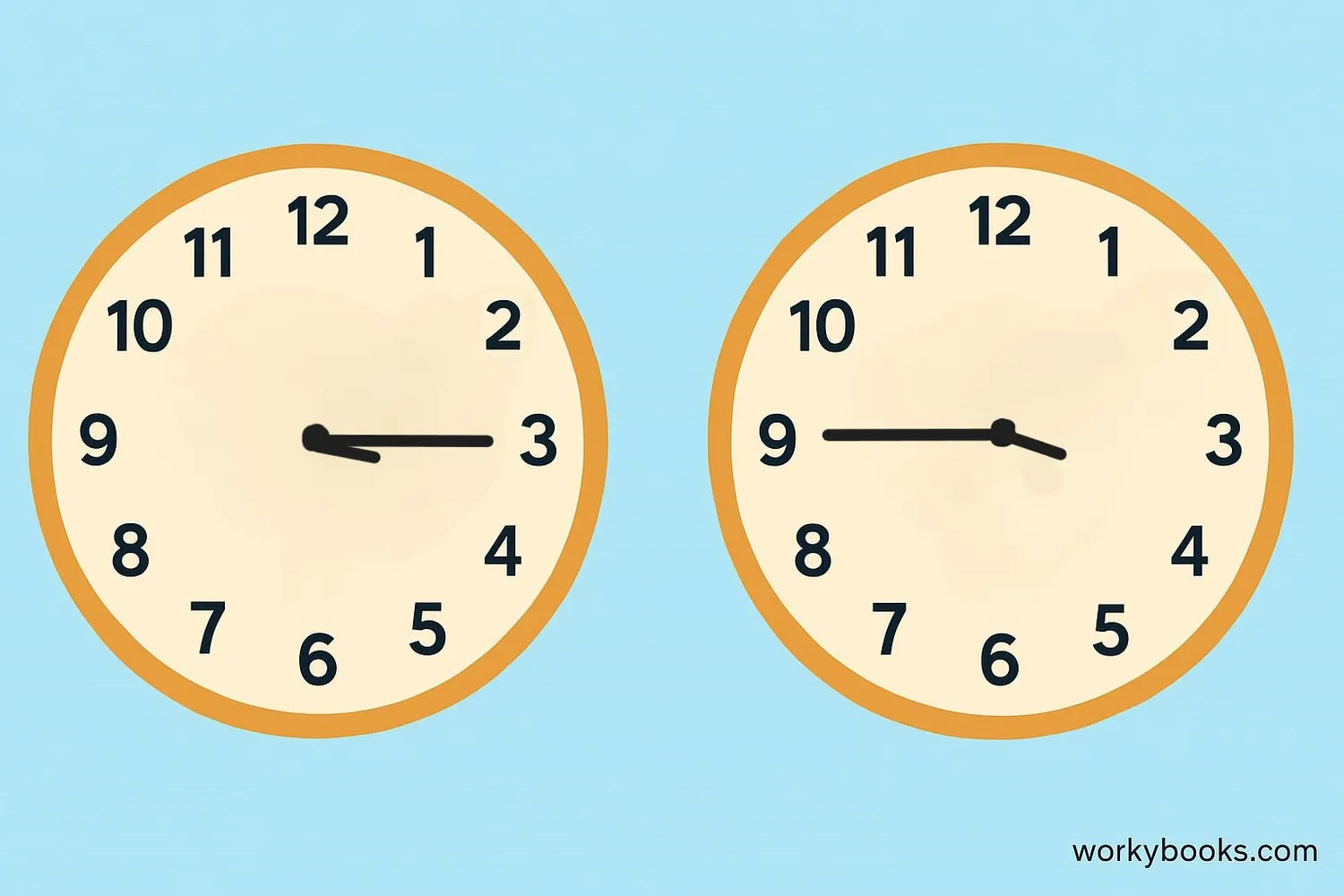Quarter Past Time - Definition, Examples, Quiz, FAQ, Trivia
Learn to tell time using quarter past with easy explanations and practice activities
What is Quarter Past?

Quarter past means 15 minutes after the hour. On an analog clock, this is shown when the minute hand points to the 3, which is a quarter of the way around the clock face.
Why "quarter"? Because a clock is divided into four equal parts:
- 12 to 3: First quarter (15 minutes)
- 3 to 6: Second quarter (30 minutes, or half past)
- 6 to 9: Third quarter (45 minutes, or quarter to)
- 9 to 12: Fourth quarter (60 minutes, or o'clock)
When we say "quarter past 2", we mean it's 15 minutes after 2 o'clock. This is written as 2:15 in digital time.
Key Concept
Quarter past = 15 minutes after the hour. The minute hand points to the 3 on the clock.
How to Read Quarter Past

Reading "quarter past" time on an analog clock is simple when you know what to look for:
Step 1: Look at the hour hand first. It will be pointing just past the hour number.
Step 2: Check the minute hand. For "quarter past", it will be pointing directly at the 3.
Step 3: Combine the hour and minutes. For example, if the hour hand is between 4 and 5, and the minute hand is at 3, it's quarter past 4 (4:15).
Remember:
- The hour hand moves gradually as time passes. At quarter past, it will be one-quarter of the way to the next hour.
- The minute hand moves faster. When it points to the 3, it has moved 15 minutes from the top of the hour.
Remember
The minute hand must point directly to the 3 for it to be "quarter past". If it's anywhere else, it's a different time!
Quarter Past Examples

Let's look at some examples of quarter past times:
Quarter past 2 (2:15):
- Hour hand: Just past the 2
- Minute hand: Pointing directly at the 3
Quarter past 5 (5:15):
- Hour hand: Just past the 5
- Minute hand: Pointing directly at the 3
Quarter past 9 (9:15):
- Hour hand: Just past the 9
- Minute hand: Pointing directly at the 3
Quarter past 12 (12:15):
- Hour hand: Just past the 12
- Minute hand: Pointing directly at the 3
Notice that no matter what hour it is, the minute hand always points to the 3 for quarter past times. The hour hand moves slightly past the hour number as the minutes pass.
Practice Tip
Look at real clocks throughout your day and see if you can spot when it's quarter past the hour!
Quarter Past vs. Quarter To

It's important to understand the difference between "quarter past" and "quarter to":
Quarter Past (15 minutes after):
- Minute hand at the 3
- 15 minutes after the hour
- Example: Quarter past 6 = 6:15
Quarter To (15 minutes before):
- Minute hand at the 9
- 15 minutes before the next hour
- Example: Quarter to 7 = 6:45
Notice that both refer to 15-minute increments, but in different directions from the hour:
- Quarter past = 15 minutes after the current hour
- Quarter to = 15 minutes before the next hour
Key Difference
For quarter past, the minute hand points to the 3. For quarter to, it points to the 9.
Time Telling Quiz
Test your understanding of quarter past with this 5-question quiz. Choose the correct answer for each question.
Frequently Asked Questions
Here are answers to common questions about quarter past time:
Time Trivia
Discover interesting facts about time and clocks:
Ancient Timekeeping
The earliest timekeeping devices were sundials used in ancient Egypt around 1500 BCE. They divided the day into 12 parts, which is why we still have 12 hours on our clocks today.
Why 60 Minutes?
The division of hours into 60 minutes comes from ancient Babylonian mathematics, which used a base-60 number system. This system was easier for calculations with fractions.
First Mechanical Clocks
The first mechanical clocks appeared in Europe during the 14th century. These large tower clocks didn't have minute hands at first - they only showed hours!
World's Oldest Clock
The world's oldest working clock is in Salisbury Cathedral, England. It was built in 1386 and still keeps time today, over 600 years later!


